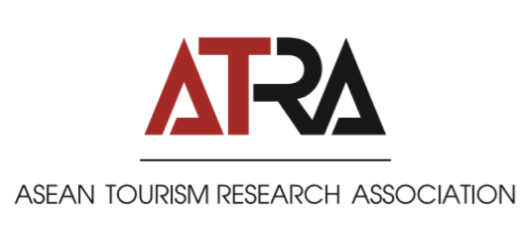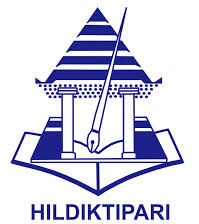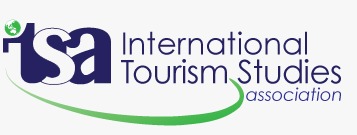| SUBMIT NOW |
|---|
 |
| INFORMATION |
|---|
| For Readers |
| For Authors |
| For Librarians |
| In Cooperation With | |
|---|---|
 |
|
 |
 |
 |
|
| ISSN |
|---|
| Indexing |
|---|
 |
 |
 |
 |
 |
 |
| Tools |
|---|
Authors must submit manuscripts online to the Journal of Tourism Destination and Attraction website by first registering as a writer.
Manuscripts submitted to the Journal of Tourism Destination and Attraction must be written in good and standard Indonesian. Writers whose manuscripts are accepted in the Journal of Tourism Destination and Attraction receive confirmation of copyright transfer from the Editorial Team as a statement of the authenticity of the manuscript.
Several provisions for writing manuscripts:
Manuscripts can be written in Indonesian or English. The manuscript is typed in Microsoft Word with 1 column for the abstract and two columns for the content. A4 paper size with length (height) 29.7 cm, width (width) 21 cm with dimensions Top 2 cm, Bottom 2 cm, Inside 1 cm, Outside 1 cm, Gutter 0.5 cm, Header 1 cm, and Footer 1 cm. The length of the manuscript is 6 - 12 pages, including tables and figures, and it has an even number of pages. The title of the manuscript is Times New Roman 14 point bold. The main title is written in all capital letters, while the subtitles use lowercase letters with capital letters at the beginning of each word. The title is written in 2 languages (Indonesian and English); if written in Indonesian, the English title is written in brackets with Times New Roman 12-point italics.
Andri, Puspita, N., & Darmawan, F. (2019). Strategi Pengembangan Wisata Berbasis Masyarakat di Pulau Untung Jawa. Journal of Tourism Destination and Attraction, 7(1), 1-10. https://doi.org/10.35814/tourism.v7i1.781
b. BookDanoedoro, P. (2009). Land-use Information from the Satellite Imagery: Versatility and Contents for Local Physical Planning. Lambert Academic Publishing AG & Co. KG.
c. Article part of the BookBerjak, P., Farrant, J. M., & Pammenter, N. W. (1989).The basis of recalcitrant seed behavior. In Talorson, R.B. (ed.) Recent advances in the development and germination of seeds. (pp. 89-108). Plenum Press, New York.
d. Regulations/LawsRI (Republik Indonesia). (2012). Undang-Undang No. 18 Tahun 2012 tentang Pangan.
Lembaran Negara RI Tahun 2012, No. 227. Sekretariat Negara. Jakarta.
Peraturan Gubernur Jawa Barat. (2010). Rencana Tata Ruang Wilayah Provinsi Jawa Barat Tahun 2009-2029.
Peraturan Daerah Nomor: 22 Tahun 2010. Gubernur Jawa Barat. Bandung.
e. Thesis/Thesis/DissertationAziz, N. (2006). Analisis Ekonomi Alternatif Pengelolaan Ekosistem Mangrove di Kecamatan Barru, Kabupaten Barru. Tesis Sekolah Pascasarjana Institut Pertanian Bogor. Bogor. 105 hlm.
f. Proceedings ManuscriptSetiawan I.B. (1999). Studies on environmental change and sustainable development of Cidanau Watershed. Proceeding of International Workshop on Sustainable Resources Manage-ment of Cidanau Watershed. Vol.1. RUBRD-UT/IPB. Bogor.
g. Conference ScriptMabowe, B.R., A. de Gier, Y.A. Hussin, M. Lubczynski and T. Obakeng. (2006). Estimation of Above Ground Biomass of Dry Savannah Trees in Sarowe Savannah Woodland, Bostwana Using Remote Sensing and GIS. An Article in 6th International Conference on Earth Observation and Geoinformation Sciences in Support of Africa’s Development, 30 October -2 November 2006. Cairo.
h. Research Result Report ManuscriptKoeshendrajana, S., Priyatna, F N. dan Mulyawan, I. (2008). Riset Identifikasi, Karakterisasi dan Valuasi Sosial Ekonomi Sumberdaya Perairan Umum Daratan. Laporan Teknis Kegiatan Penelitian. Balai Besar Riset Sosial Ekonomi Kelautan dan Perikanan No. 10: 8-29. BRKP. Jakarta.
i. Online ManuscriptBrown, S. (1997). Estimating Biomass and Biomass Change of Tropical Forest. FAO Forestry Paper 134. FAO, Rome. Cited in http://cdm.unfccc.int/Panels/ar. [17 September 2007].
| SUBMIT NOW |
|---|
 |
| INFORMATION |
|---|
| For Readers |
| For Authors |
| For Librarians |
| In Cooperation With | |
|---|---|
 |
|
 |
 |
 |
|
| ISSN |
|---|
| Indexing |
|---|
 |
 |
 |
 |
 |
 |
| Tools |
|---|
 Editorial Address:
Editorial Address: